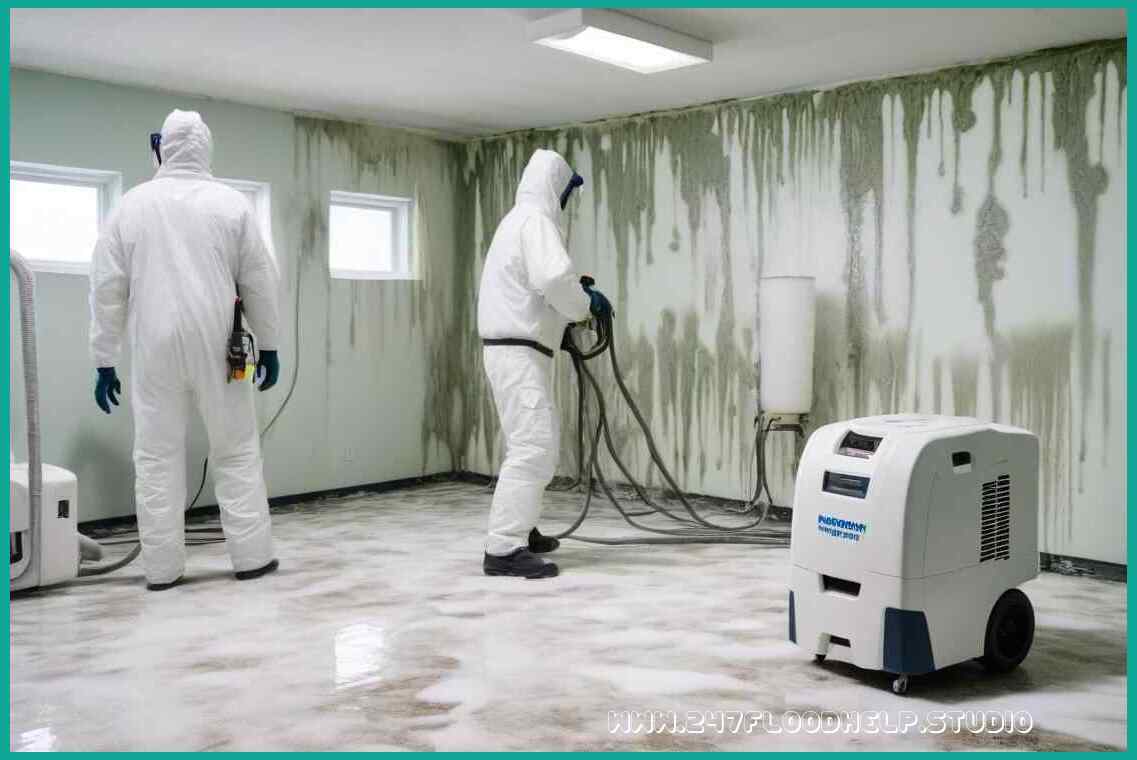 Rapid air circulation involves strategically placing high-powered fans throughout water-damaged areas to promote evaporation and enhance drying efficiency. This technique facilitates the removal of trapped moisture from various surfaces including walls, floors, carpets, furniture, and even structural components such as beams and joists.
Rapid air circulation involves strategically placing high-powered fans throughout water-damaged areas to promote evaporation and enhance drying efficiency. This technique facilitates the removal of trapped moisture from various surfaces including walls, floors, carpets, furniture, and even structural components such as beams and joists.
The advantages of incorporating rapid air circulation into flood damage repair are numerous:
1. Efficient Moisture Extraction: By increasing airflow across wet surfaces, rapid air circulation accelerates evaporation rates. As a result, excess water is drawn out more quickly compared to passive drying methods alone.
2. Preventing Mold Growth: Mold thrives in damp environments created by stagnant or slow-drying conditions after a flood event. Swiftly circulating dry air helps prevent mold spores from settling on surfaces before they have an opportunity to take hold.
3. Salvaging Materials: When exposed to excessive moisture for prolonged periods, certain materials may suffer irreversible damage. Implementing fast drying strategies through enhanced airflow increases the chances of salvaging items like wood flooring or upholstered furniture that would otherwise be lost due to warping or mold penetration.
4. Reducing odors: Stagnant water often emits unpleasant odors that tend to linger after flooding incidents-prompt restoration efforts with appropriate air movement assist in minimizing residual smells by rapidly moving humid indoor air outdoors where it dissipates naturally.
To maximize drying efficacy during flood damage repairs through advanced ventilation equipment:
a) Industrial-Grade Fans: Employ powerful fans designed specifically for professional restoration projects. These fans typically feature variable speed settings and adjustable airflow angles, enabling customization to achieve optimal drying conditions in different spaces.
b) Air Movers: Implement air movers, which are compact yet highly effective devices responsible for generating high-velocity airflow across surfaces. These portable units facilitate targeted drying of specific areas that may be difficult to access with larger equipment.
c) Dehumidifiers: Utilize dehumidifiers alongside rapid air circulation techniques to effectively remove excess moisture from the air itself. This combination ensures comprehensive drying by tackling both surface-level and airborne moisture simultaneously.
It is important to note that while rapid air circulation can significantly enhance the efficiency of flood damage repairs, it should always be carried out by trained professionals equipped with proper knowledge and experience. Additionally, precise calculations considering factors such as room size, humidity levels, temperature, and materials involved must inform the placement and operation of ventilation equipment for optimal results.
In conclusion, incorporating rapid air circulation techniques into flood damage repair plays a vital role in mitigating further losses caused by excessive moisture. By utilizing specialized fans, air movers, and dehumidifiers in a strategic manner within affected spaces, restoration experts can expedite evaporation rates, prevent mold growth, salvage valuable materials more effectively and reduce residual odors. Swift action combined with advanced ventilation technology allows homeowners or businesses affected by flooding incidents to restore their properties efficiently while minimizing potential health hazards associated with prolonged exposure to excessive moisture.